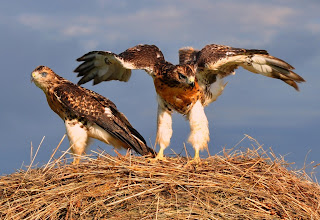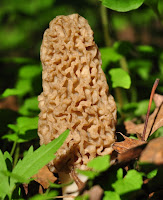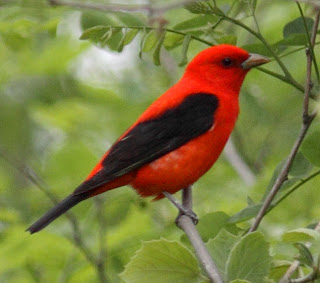Schulte’s Pasture
We all have favorite
places. Favorite deer stands, favorite
places to hunt ducks, favorite turkey woods.
With Iowa’s spring turkey
season currently at its peak, I’ve been spending a lot of time thinking about
one my favorite places. For me, there
are few destinations that conjure up such a vast collection of fond
memories. This special place is simply
known as Schulte’s Pasture.
Located in the rugged bluff
country of northeast Iowa’s Clayton County, Schulte’s Pasture has been in use
for a long long time. For generations
now, herds of Holstein dairy cows have gained sustenance here; the black and
white bovines kept in place by the sagging, three-strand barbed wire fence that
leads from farmstead building site to ridge top meadow. Where growing saplings have sprouted too
close, the rusted wire is forever entombed by several inches of wood and bark.
Completely surrounded by
timber, Schulte’s Pasture is a veritable turkey magnet. Small but mighty, the four acre plot is the first
spot to green up each spring, and the short cropped grass presents an ideal
backdrop for gobblers to strut their stuff as disinterested hens forage on new
plant growth or take advantage of emerging insect life. Although turkey traffic can be heavy, human
hunters are rarely seen here. In
reality, few people even know the place exists.
Located completely out of sight and a good three quarters of a mile from
the nearest county roadway, the pasture remains a well-guarded emerald secret.
We accidentally stumbled onto
Schulte’s Pasture during the late 1970s.
That’s when Steve Schutte, Ed Kotz and I first began prowling the
adjacent hardwood timbers. It was a time
when newly restored turkey populations and the mysterious sport of turkey
hunting were both enjoying unprecedented adolescent growth spurts. And although turkey populations were sparse
by today’s standards, we usually managed to hear and occasionally even see
birds. Turkey seasons were short, turkey
decoys were illegal, and hunting was only allowed during the morning. But in spite of the many challenges, one of
us usually managed to bag a turkey each year which statistically kept us at
average or above.
By the late1980s, turkey
hunting had undergone dramatic change.
Turkey populations had soared and our success rate had followed the trend
-- at least on the good days anyway. By
now, we were all busy raising families; and as we made our way into the 1990s,
we began introducing a new generation of hunters to the unmatched thrills of
turkey hunting. The growing squadron of
young hunters included my son Matt; Steve Schutte’s boys, Brad and Dan; and Ed
Kotz’s son, Wesley. By then, my brother
Sterling and his son Justin had also joined the party.
Matt bagged his first gobbler
along the northern fringe of Schulte’s Pasture.
It had been a tough hunt. There
had been three days of abnormally cool temperatures and driving rain. Matt had contracted a World Class head cold,
and both of us were bone tired and discouraged. At around 5 o’clock on our final afternoon,
the rain suddenly stopped. The skies
cleared, and we decided to give it one last try.
Working and calling our way
along an abandoned logging road, we soon detected the faint sound of distant
gobbling. As we hustled through the
woodland, the continued gobbling led us straight to Schulte’s Pasture where we
determined the bird was sounding off from just inside the timberline on the
opposite side of the plot. Cautiously
creeping forward and finally taking our seat against the base of sturdy
hardwood, we began calling. The gobbler
roared back, and immediately headed our way.
A slight ridge runs along the pasture’s centerline, and the first we saw
of the approaching gobbler was the top of his magnificent tail fan -- vividly
backlight against the late afternoon sun.
The tom quickly topped the rise and continued his approach. After awing us with a final and spectacular
display of gobbling, the tom stepped into range. Matt’s 20 bore rocked the timber and his very
first gobbler was in the bag. The tom
sported a long thick beard and needle sharp, inch-plus spurs -- a magnificent
bird by any standard. The day had
provided both of us with a good lesson of just how quickly turkey hunting can
spin on a dime. The hunt is a memory we
will forever cherish.
The mention Matt’s head cold,
reminds me of a time when I didn’t feel too well myself. Steve Schutte and I were enjoying a four day
turkey hunt when I suddenly fell victim to the flu. I spent a miserable night and when it came
time to roll out the following morning, my temperature was pegging the
thermometer at 102 degrees. The weather
had taken a sudden turn for the worse as well.
What had been ideal spring weather the day before had now become a
significant late season snowstorm.
Alternating between sweating and freezing, I felt absolutely horrible
and seriously considered staying out of the woods. But after several minutes of just lying there
and considering my options, I finally decided to at least try and go out for
the first hour.
By the time daylight arrived,
I had seriously begun to question the wisdom of my decision. Wet and sticky, the snow was coming down so
hard that visibility was severely limited.
Cold and soggy, the forest hardwoods were painted stark white on one
side; while remaining dark and somber on the other.
There was, of course, no
early morning gobbling. Using a high
pitched Tom Turpin Yelper, I tried sitting and calling at several locations as
I worked my way through the timber -- desperately hoping to raise a response. Eventually arriving on the south side of
Schulte’s Pasture, I decided that this would be my final stop. After calling for 10 minutes or so, I was
about to pack it in when I heard a familiar sound --- the aggressive fighting
purrs of male turkeys squaring off. The
purring continued to increase in volume until I figured the birds were within a
literal five or six feet of my vibrating eardrum. The only problem was that the turkeys were on
my right side [I shoot right handed] and far enough to the rear that I couldn’t
see them.
The situation escalated to a
crisis when the purring of one bird suddenly became an alarm putt. When a second bird began sounding the alarm,
I knew I was in trouble. My only hope
was to execute a rapid about face, identify a target, and fire. We all know from painful experience just how
quickly a wild turkey can vanish. And
though I realized that my chances for success were slim or none, making the
attempt was all I had. There was also a
question regarding the reliability of my firearm. I was shooting a double barreled Navy Arms
muzzleloader. The gun, like everything
else in the timber, was soaking wet.
Although I had tried to keep a more or less dry glove across the
nipples, there was still a good probability of a misfire.
Something had to give, and it
was now or never. Rolling myself away
from the tree, I twisted to the rear and back to the right as far as my
skeleton would allow. The turkeys --
which turned out to be a trio of jakes -- were already airborne. Identifying all three as legal game, I
quickly framed the head of the closest bird between the cocked hammers. I pulled the front trigger and the 12 gauge
roared. Best of all, the retreating jake
fell stone dead at a distance of 14 paces.
Returning to camp, I got into some dry clothes, crawled back into bed
and slept until noon. When I woke up, my
fever was gone and I was ready for lunch.
The snow had stopped and Steve ended up shooting a nice tom the same
afternoon.
But time moves on. The boys grew bigger. Hunting skills improved. One by one, more gobblers were carried from
the forest as the Beard Count grew. Over
time, our limited collection of turkey hunting stories became expanded to a
library. A good share of those outings
took place at or around Schulte’s Pasture.
Many of the adventures were documented on Kodak film, and I enjoyed the
unique privilege of photographing the boys as they posed with their first
turkeys.
But nothing stays the same,
and times change. The years and the
seasons pass all too quickly. Boys
become men. Kids grow up, leave home,
and are soon having kids of their own.
Today, Brad Schutte is a financial planner living near Kansas City. Dan Schutte is an environmental educator at
Duluth. Matt Washburn serves as a
Conservation Officer with the Iowa DNR.
Wesley Kotz is a captain with the United States Army and was awarded the
Bronze Star during a 2011 deployment to Iraq.
Justin Washburn sells commercial real estate in the Des Moines
area. Life used to seem simple; but not
any more. Young people have busy schedules
and getting everyone to turkey camp at the same time presents a monumental
challenge.
There are other changes as
well. Landowners age and retire; at
least one has passed on. And although
the sagging barbed wire fences are still there, the black and white Holsteins
no longer visit Schulte’s Pasture. The
leisurely open air grazing of contented dairy cows has been replaced with the
stark confinement of modern day steel roofed, high-tech milk factories.
But there is also some good
news. Although now mostly abandoned, the
pasture and its associated timbers remain.
As they have in times past, wild turkeys still come here each spring to
gobble, strut, and to compete for hens along the pasture’s wooded margins. Whenever I’m in the neighborhood and time
allows, I still take the long walk back to this favored spot. Sitting against the base of an ancient
hardwood, I lean back and slowly close my eyes.
One by one, I try to recall the hunts, the gobblers, the successes, and
the near misses. Most of all, I remember
the people -- the lifelong friends and family who helped create the countless
memories that make this place so uniquely special.
As I suppose is the case with
most of you, I often wish that I could turn back the hands of time. I’d love to go back and hear the daybreak
sounds of the waking forest. I’d love to
relive all the wondrously spectacular sunrises.
One more time, I’d like to see my friends as they [we] were when the
sport of Iowa turkey hunting was still brand new. As much as anything, I’d love to see the
excitement in the eyes of all those young hunters. I’d love to go back for a retake of all of
those “first turkey” photos.
Like you, I have an endearing
passion for wild turkeys and for the sport of turkey hunting; and I hope to see
a lot more gobblers before I’m done. But
when the time does arrive for that inevitable final hunt, I have but one
wish. I hope that the very last gobbler
I hear greeting the spring sunrise will be sounding off from somewhere along
the shrouded margins of an emerald paradise --- A favorite place simply known
as Schulte’s Pasture.
__________________________________________________
Lowell Washburn McGregor,
Iowa

















































